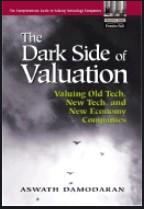Answered step by step
Verified Expert Solution
Question
1 Approved Answer
Read the attached T erm Sheet Negotiations . case study and compare the two term sheets. Provide detailed answers to the following questions: What are
Read the attached Term Sheet Negotiations. case study and compare the two term sheets.
Provide detailed answers to the following questions:
- What are the main differences and similarities between the two term sheets? Be specific about the impact.
- If you were the entrepreneur and could not negotiate any of the terms in either term sheet, which one would you prefer and why?
- How would you seek to alter the terms in each term sheet during negotiations with each venture capitalist? Which terms would you seek to alter first? Be specific on what you would ask for.
- Does it make a difference to your answers whether you expect Trendsetter.com to grow fast or grow slowly?
- What aspects other than term sheets would you take into consideration when choosing among potential venture capital investors?










Step by Step Solution
There are 3 Steps involved in it
Step: 1

Get Instant Access to Expert-Tailored Solutions
See step-by-step solutions with expert insights and AI powered tools for academic success
Step: 2

Step: 3

Ace Your Homework with AI
Get the answers you need in no time with our AI-driven, step-by-step assistance
Get Started


